Ask an Expert
Planning the right solution requires an understanding of your project and system requirements. Let Kingston's experts guide you.
Your web browser is out of date. Update your browser now for better experience on this site. https://browser-update.org/update-browser.html


Rob May is the founder and managing director of ramsac. He has a team of over 100 consultants working with him to deliver technology and cybersecurity services/support (and has done so for over 30 years).
Rob is the UK Ambassador for Cybersecurity for the Institute of Directors, and is ranked #5 in the Global rankings for Cyber Security Thought Leaders/Influencers. He is on the Advisory Board of The Cyber Resilience Centre for the South East, working with industry, academia and law enforcement. He is also an author, a thought leader, and an award-winning international speaker.
Edge computing means running fewer computing processes in the cloud and moving those processes (and data) closer to where it is being consumed, thus reducing latency and bandwidth use by minimizing the amount of long-distance data transfer between a client/device and a server (sometimes thousands of miles away).
The development of edge computing was driven by the exponential growth and demands of IoT (Internet of Things) devices, which connect to the internet for sending and receiving data from the cloud. But the rise of real-time applications that need processing at the edge and technology like 5G are rapidly driving the technology forward.
We often take much of this technology for granted. However, when we start to think of applications that can have a real impact on human life, such as self-driving cars, medical devices, or aircraft systems, there is an absolute need for these to react in real-time. Reducing the latency of data processing is therefore critical.
Edge computing hardware and services help resolve the problem by processing and storing data locally. An edge gateway can process data from an edge device, and then send only the relevant data back to the cloud for storage to save on bandwidth.
The definition of the edge of the network is a bit incongruous; some people think of the processor inside an IoT device as the network edge, but a router, an ISP, or a local edge server also fall within the definition. The key thing is proximity, with the edge of the network being physically close to the device and where it communicates with the internet.

This constant growth and demand on processing and enormous storage requirements are driving the growth and expansion of data centers and hybrid-cloud and while we see huge-scale adoption of public cloud, private cloud and small local data centers have never seen so much demand.
A critical subject that the industry and its users must continue to focus on and develop is cybersecurity and the need to ensure a perennial agenda item for security and resilience. Edge computing is another factor in our digital lives that increases attack vectors and widens the threat surface.
In the workplace and in our domestic lives, we continue to introduce more connected "smart" devices, and as we’ve increased the number of edge servers and IoT devices that contain built-in computers, there are copious opportunities for malicious hackers to attack and compromise these devices. It is imperative that data centers (of all sizes) are equipped to face the security challenges of our interconnected digital world.
An issue often joked about with the Internet of Things is that IoT is actually an acronym for the Internet of Threats! Part of the challenge is consumers not considering the security risks of what they are buying and deploying. Another is the physical challenge in a world where we do not easily have authentication by credentials or authority, such as a human individual. In this case, it’s essential that we figure out different ways to protect data.
Certainly, data at the edge needs appropriate deliberation, since it is often being handled by many different devices and by default may not be as secure as a centralized or cloud-based system. As we see the number of IoT devices continue to grow, it is a fundamental requirement that the industry works hard to understand any potential device security issues, and to make sure those systems can be properly secured. Data encryption is vital, along with appropriate security protocols and the correct access-control methods.
Edge computing inevitably requires increased local hardware. For example, an IoT camera needs an integral computer to send its raw video data to a web server. If we also want that device to run its own motion detection algorithms, it would need a much more sophisticated computer with increased processing power.

To meet the challenges outlined above, data center technology must continue to evolve: we need to look for optimized storage capacity, deploy faster servers, and ensure widespread use of hardware encryption and more effective compression. Simply transitioning from SAS (Serial Attached SCSI) to SATA or NVMe Enterprise SSD (Solid-State Drives) can have a dramatic impact in reducing power usage when extrapolated to the level of entire data centers.
We will also see more widespread use of 3D NAND (or V NAND) which is high-performance, high-capacity, and high-scalability flash technology that stacks a type of non-volatile flash memory chip (the memory cells are stacked vertically in multiple layers). The purpose of this technology is to make devices faster and provide greater capacity while running more efficiently using less energy.
Navigating this increasingly complex IT ecosystem is far simpler when you can call on the services of a reputable hardware vendor; a supplier of memory and storage products who happily works with you on a personal level to ensure that the products you are purchasing align with your short, medium, and long-term IT and business goals. This is where Kingston Technology's "Ask an Expert" Team excels.
With over 30 years’ experience, Kingston has the knowledge, agility, and longevity to fully enable both data centers and enterprises to respond to the challenges and opportunities presented by the increase in 5G, IoT, and edge computing.
#KingstonIsWithYou
Was this helpful?

Planning the right solution requires an understanding of your project and system requirements. Let Kingston's experts guide you.
When you start with Kingston, choosing memory is easy.
With over 35 years of expertise, Kingston has the knowledge and resources you need to choose memory with confidence.
Simply enter the make and model number or system part number of the computer system or digital device to find the Kingston products you need.
Search by either the Kingston part number, distributor part number or manufacturer equivalent part number.
No products match your current filter selection. Try adjusting your filters to explore more options.

The differences between SSD classes lies in two components; the processor and the NAND memory.
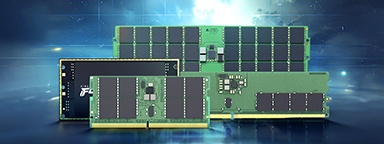
Learn how innovative memory solutions are transforming laptops, desktops, and data centers.
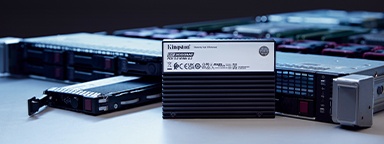
Explore how SSDs are transforming data centers with advanced technology and performance.

Learn how Kingston SSDs transformed Mission Digital’s workflow with speed & capacity.
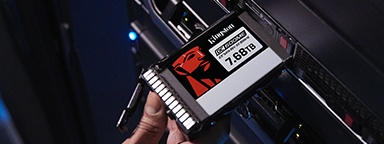
Join Simon Bestman to explore SSD benefits over HDDs and the latest storage trends.
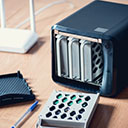
Reasons why a NAS would benefit your home or small office setup.

System Integrators in India grew their business and reputation using Kingston’s reliable products.

Here is a list of USB security features to consider for data protection.

Learn what the 3-2-1 data backup method is and why it is your best defense against ransomware.

Simon Besteman explains the current and future challenges for data centers.
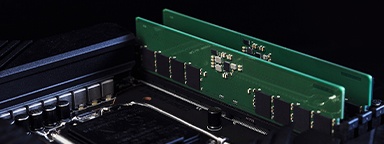
Explore DRAM technology’s evolution and gain insights into future trends in our eBook.
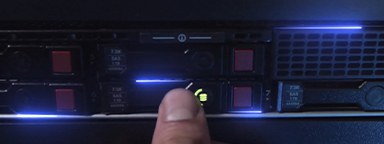
Learn how Terabytes Written and Drive Writes Per Day are defined, and their differences.
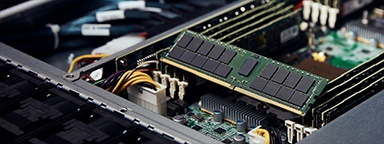
We explore the different types of memory & how to make the right choice for your server.
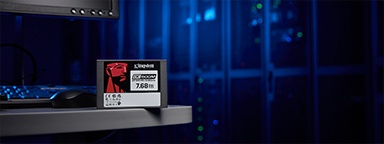
Read the whitepaper to learn how DC600M helps vSAN demand performance and efficiency.

Kingston sets industry standards with unwavering commitment to quality and reliability.

Kingston and QNAP have improved the efficiency of digital theaters with their hardware.

Questions to ask when seeking the right SSD for your organization’s data center.

Here are some key points to help you better balance price, performance, and longevity.

We explore the how media organizations can speed up workflows through storage and memory.

2023 has been a year full of challenges and innovations. But what will 2024 bring?
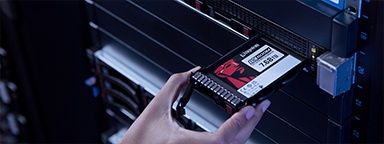
Elevate your data center with Kingston's VMware-compatible DC600M enterprise SSDs.

Kingston's server SSD and memory transformed Android Basha's production workflow.

Kingston storage solutions help improve performance photographer Ralph Larmann’s workflow.

DASH Pictures enhances their media production efficiency with Kingston SSDs.

Discover why upgrading your technology in this economy matters more than ever.

Server SSDs have higher endurance, better reliability, and improved performance over client SSDs.
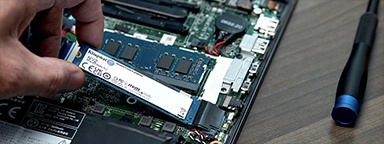
We explore the benefits of upgrading vs. replacing, and how organizations can succeed.
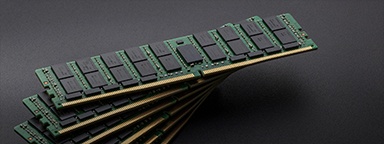
Assess your existing server hardware to extend its lifespan and maximize your investment.
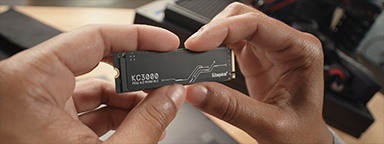
Learn about NVMe and why choosing it is beneficial to your organization’s infrastructure.

We discuss the journey of digital twin technology, exploring real-world examples for success.
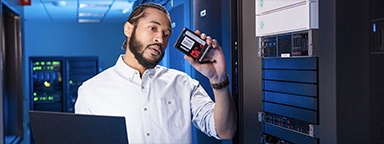
In this whitepaper, we explain the benefits of SDS vs. its HW and SW RAID counterparts.
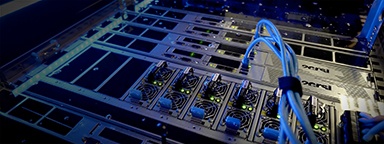
In this video, we explain how Kingston and 2CRSi work together to solve data center challenges.

Learn why APLIGO chose Kingston SSD and memory to support their system integration business.

Choosing storage products for your enterprise is a complex process. Kingston offers our expertise.

Learn how Kingston and QNAP solutions help optimize content creation.

Learn how Kingston supported a leading hosting provider with optimal configuration.

Kingston examines how its DC1500M Enterprise NVMe SSD affects workloads and compares to competitors.

In this eBook, we speak with experts about the journey of data storage, and what the future holds.

From shooting, to post-production, to encoding, to distribution at data centres, SSDs and RAM are powering the world of OTT Media & Entertainment (M&E) video and audio streaming.

We explore the top 12 tips small and medium size enterprises can take to enhance cybersecurity.
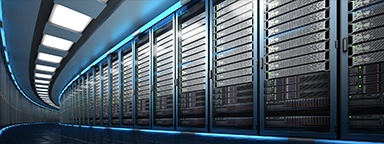
This infographic is about the different types of data centers, the myths, and Kingston's DC solutions.

We’ve examined several factors using unique research to identify what may impact markets globally in 2022.

2021 has been a year full of challenges and innovations. But what will 2022 bring?

Read our eBook, about the rise of digital transformation and what the future holds.

Bill Mew shares his thoughts how the largest security challenges need commitment from the boardroom.

The high-performance DC500M Server SSD is the best storage choice for a pro videographer.

Memory and storage have evolved over the years. Get an insight from our industry expert.

Our partnership with Microchip’s RAID controllers helps deliver high performance for server storage.

Kingston helped optimize Simply Hosting’s storage in its data centers to ensure they were always on.

Learn how Kingston helped to lower power costs and increase performance so Hostmein could deliver on SLAs.

In this eBook, we speak with experts about IoT’s journey and prepare organizations for IoT’s future.

The pandemic has increased internet traffic which has placed importance on the role of data centers.
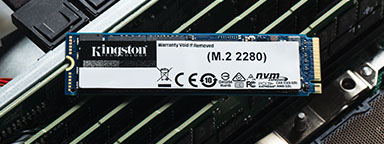
Cameron Crandall of Kingston helps you self-evaluate the need to move to your server storage solution to NVMe.

NVMe over Fabric helps CPUs to run more efficiently with lower latency and higher throughput.

Join industry experts to discuss how technology partners like Kingston support their business growth and sustainability.

Industry experts discuss topics like the key pillars of tech relationships, sustainability, and IT optimization.
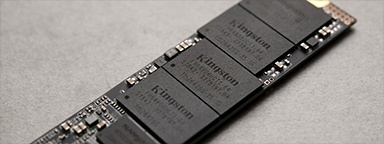
Watch this webinar to discover the benefits of NVMe SSDs.

The switch to NVMe requires a full stack review from IT architects to ensure redundancy exists on every layer of the stack.

In this eBook, we talk to industry experts as we explore the benefits of artificial intelligence, how it’s fuelling data consumption and how you can prepare your organization for the opportunities it presents.

Here are seven of the predictions of what will drive NVMe adoption for 2021.

Test SSDs to know the real endurance, changes in latency and IOPS in sequential and random read or write scenarios.

SSD test beds for enterprise servers should be done with the real hardware, OS and data. We’ll explain why.

MSP industry expert Rob May’s insight into how memory/storage upgrades help companies with remote workers.

Don’t pick the wrong type of SSD for your server. A wrong choice means a higher cost of ownership. Learn to pick the right SSDs.

What will 2021 bring in tech and trends? What do our KingstonCognate members and industry experts predict for the future?

Learn why the future of business depends on SSD-enabled SDS, and how SSD fits into software-defined storage solutions.
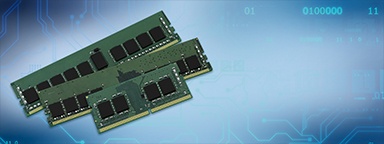
Planning a new system? Watch this video to learn about the benefits 16Gbit DRAM next-gen technology.

Learn how Hosteur supported their rapid growth & SLAs with Kingston Enterprise products & services.
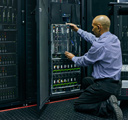
Data centers should be using server SSDs. There are many benefits over client drives and costs have come down.

NVMe is now the standard protocol for SSDs to empower data centers and enterprise environments.
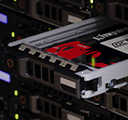
Find out how Hardwareluxx were able to manage the growth of their web traffic using Kingston's DC500M SSD.

SDS hasn’t lived up to its hype but now that NVMe is more affordable the commodity hardware is ready to deliver.

Choosing the right SSD for your server is important since server SSDs are optimized to perform at a predictable latency level while client (desktop/laptop) SSDs are not. These difference result in better uptime and less lag for critical apps and services.

Industry expert Simon Besteman provide insight on why 5G demands edge computing in micro data centers.
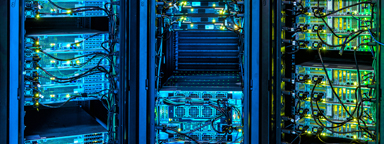
Cloud and on-premise data center managers can learn a lot from supercomputing.

What are the demands of the Data Centers in these unprecedented times? Read this article from Industry Expert, Dr Sally Eaves & she will provide you with an insight on the demands.
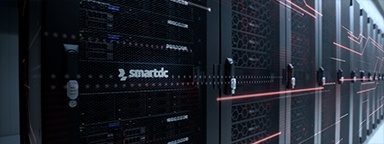
Kingston delivered compatible memory that met the performance goals of i3D.net's servers, extending the service life of their existing hardware.

Why is Edge Computing Data Centers important for 5G? Download and read Kingston’s eBook on Edge Servers and the 5G rollout.
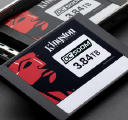
This whitepaper demonstrates how using Kingston Technology’s Data Centre DC500 SSDs can reduce your overall capital and licence costs by 39%.
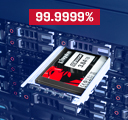
Data Center 500 Series SSDs (DC500R / DC500M) – Consistency, predictability of Latency (response time) and IOPS (I/Os Per Second) performance.
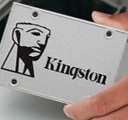
End-to-End Data Protection protects customer’s data as soon as it is transferred by the host system to the SSD, and then from the SSD to the host computer. All Kingston SSDs incorporate this protection.

SDS provides a policy-based control of data tiers, independent of the underlying storage hardware.

A percentage of space on an SSD is reserved for OP in firmware. OP can improve performance.
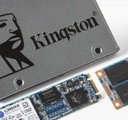
Firmware/hardware PFAIL protection is an highly effective method for preventing data loss in enterprise SSD.

Kingston uses LSI® SandForce®-based controllers in some SSDs that use proprietary tech for Garbage Collection.

HPC can require massive amounts of data. SSDs consume a fraction of the power of their spinning disk.

Kingston datacenter SSDs provide excellent resiliency to protect sensitive data in OLTP workloads.

Frequently asked questions around SSD technologies and terms like SATA, M.2, NAND, RAID, NVMe, PCIe, SAS, and keying.

Storage can be the most challenging component for VDI performance.
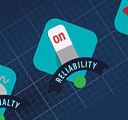
Testing is a cornerstone of our commitment to deliver the most reliable products on the market. We perform rigorous tests on all of our products during each stage of production. These tests ensure quality control throughout the entire manufacturing process.
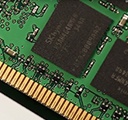
Learn how DDR4 delivers faster speeds, reduced power consumption and increased capacity over DDR3.


